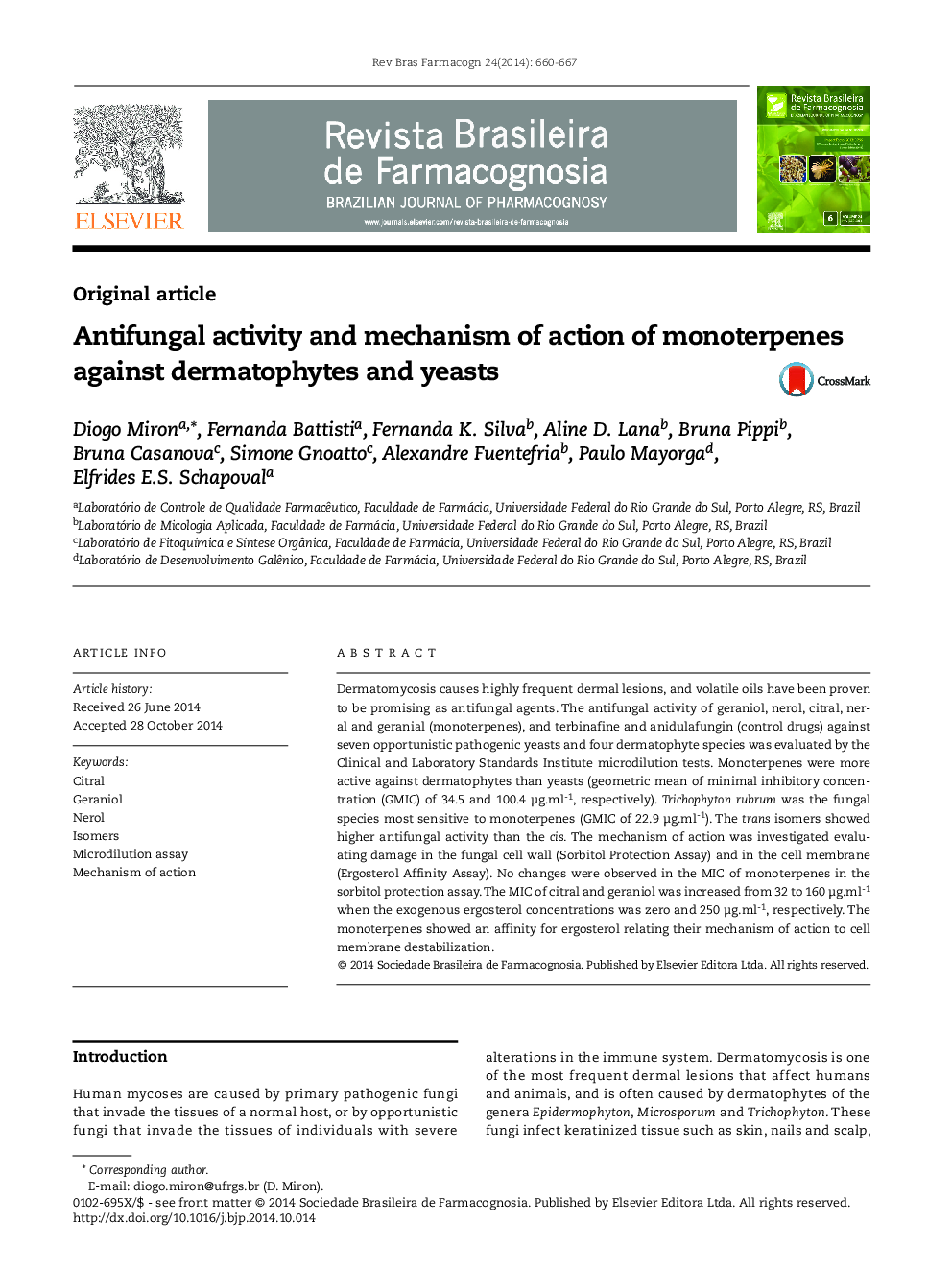| Article ID | Journal | Published Year | Pages | File Type |
|---|---|---|---|---|
| 2577658 | Revista Brasileira de Farmacognosia | 2014 | 8 Pages |
Dermatomycosis causes highly frequent dermal lesions, and volatile oils have been proven to be promising as antifungal agents. The antifungal activity of geraniol, nerol, citral, neral and geranial (monoterpenes), and terbinafine and anidulafungin (control drugs) against seven opportunistic pathogenic yeasts and four dermatophyte species was evaluated by the Clinical and Laboratory Standards Institute microdilution tests. Monoterpenes were more active against dermatophytes than yeasts (geometric mean of minimal inhibitory concentration (GMIC) of 34.5 and 100.4 μg.ml-1, respectively). Trichophyton rubrum was the fungal species most sensitive to monoterpenes (GMIC of 22.9 μg.ml-1). The trans isomers showed higher antifungal activity than the cis. The mechanism of action was investigated evaluating damage in the fungal cell wall (Sorbitol Protection Assay) and in the cell membrane (Ergosterol Affinity Assay). No changes were observed in the MIC of monoterpenes in the sorbitol protection assay. The MIC of citral and geraniol was increased from 32 to 160 μg.ml-1 when the exogenous ergosterol concentrations was zero and 250 μg.ml-1, respectively. The monoterpenes showed an affinity for ergosterol relating their mechanism of action to cell membrane destabilization.
